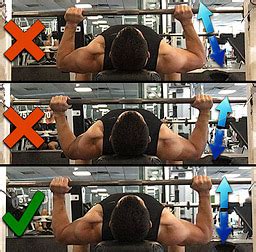The Challenge of Limited Time, The Opportunity for Growth
For many men, life’s demands often leave little room for extensive gym sessions. Juggling work, family, and other commitments can make it seem impossible to achieve significant muscle gain and strength. However, the good news is that maximizing your physique doesn’t necessarily require hours upon hours in the gym. With a strategic approach, smart programming, and unwavering consistency, you can build an impressive physique and boost your strength even with limited gym time.
This article will guide you through the core principles and practical methods to make every minute count, transforming your limited time into maximum results.
Core Principles for Time-Efficient Training
Building muscle and strength efficiently hinges on understanding fundamental training principles. It’s not about how long you’re in the gym, but how effectively you train during that time.
Prioritize Compound Movements
If time is scarce, compound exercises are your best friend. These multi-joint movements engage several muscle groups simultaneously, giving you more bang for your buck. Think exercises like squats, deadlifts, bench press, overhead press, and rows. They recruit more muscle fibers, allow for heavier lifting, and stimulate a greater hormonal response crucial for growth.

Embrace Progressive Overload
This is the cornerstone of muscle and strength gain. To grow, your muscles must be continually challenged. This means consistently increasing the demands placed on them over time. Progressive overload can manifest as:
- Increasing the weight: Lift heavier than last time.
- Increasing repetitions: Do more reps with the same weight.
- Increasing sets: Add another set to an exercise.
- Decreasing rest time: Perform the same work in less time.
- Improving form: Execute exercises with better control and range of motion.
Intensity Over Volume
When time is short, quality trumps quantity. Instead of aimlessly performing countless sets, focus on making each set count. Train close to failure with good form, pushing your muscles hard in the reps you do perform. Shorter, more intense workouts can often be more effective than longer, less focused ones.
Designing Your Efficient Workout Plan
Applying these principles to your workout structure is key to success.
Full-Body Workouts Are Your Best Friend
Instead of splitting your body into individual muscle groups (which requires more gym days), opt for full-body workouts performed 2-3 times per week. This allows you to hit each major muscle group multiple times, maximizing growth signals while minimizing your total time commitment. A typical full-body session might include a squat variation, a hinge (like deadlifts), a vertical push, a horizontal push, a vertical pull, and a horizontal pull.

Optimize Every Minute: Supersets and Drop Sets
- Supersets: Pair two non-competing exercises back-to-back with minimal rest in between (e.g., bench press immediately followed by rows). This allows you to increase your work capacity in a shorter timeframe.
- Drop Sets: After completing a set to failure, immediately reduce the weight and continue for more reps until failure. This extends the time your muscles are under tension, promoting hypertrophy.
These techniques allow for significant intensity without adding much to your overall workout duration.
Smart Set and Rep Schemes
For strength, aim for lower reps (3-6) with heavier weights. For hypertrophy (muscle growth), higher reps (8-12) are often preferred. Consider incorporating a mix, perhaps starting your workout with a heavy compound lift in the strength range, followed by accessory exercises in the hypertrophy range.
Beyond the Gym: Nutrition and Recovery
Your effort in the gym is only one piece of the puzzle. What you do outside of it is equally, if not more, important for maximizing gains.
Fuel Your Gains: Protein Intake
Muscle repair and growth depend heavily on adequate protein intake. Aim for 1.6-2.2 grams of protein per kilogram of body weight daily. Distribute this intake throughout the day to ensure a constant supply of amino acids to your muscles.
Caloric Intake for Growth
To build muscle, you generally need to be in a slight caloric surplus. Ensure you’re eating enough nutrient-dense foods to support recovery and growth without excessive fat gain. Track your macros for a few days to get an idea of your current intake and adjust as needed.

The Power of Sleep and Rest
Muscle growth primarily occurs when you’re resting, not when you’re training. Aim for 7-9 hours of quality sleep per night. During deep sleep, your body releases growth hormone and repairs muscle tissue. Undersleeping can impair recovery, reduce strength, and hinder progress.
Consistency is King (and Queen)
There’s no magic pill or one-time workout that will transform your physique. Consistent application of these principles over time is what yields results.
Track Your Progress
Keep a workout log. Note down the exercises, sets, reps, and weight used for each session. This allows you to consistently apply progressive overload and see tangible evidence of your improvements, which is a huge motivator.

Listen to Your Body
While intensity is important, so is avoiding overtraining and injury. Pay attention to persistent fatigue, joint pain, or significant drops in performance. Incorporate deload weeks or adjust your training as needed to prevent burnout.

Conclusion
Maximizing muscle gain and strength with limited gym time is not just possible, it’s a reality for many successful lifters. By focusing on compound movements, embracing progressive overload, prioritizing intensity, and optimizing your nutrition and recovery, you can build an effective training regimen. Remember, consistency, smart planning, and a commitment to making every session count will be your greatest allies in achieving your fitness goals, no matter how packed your schedule is.




